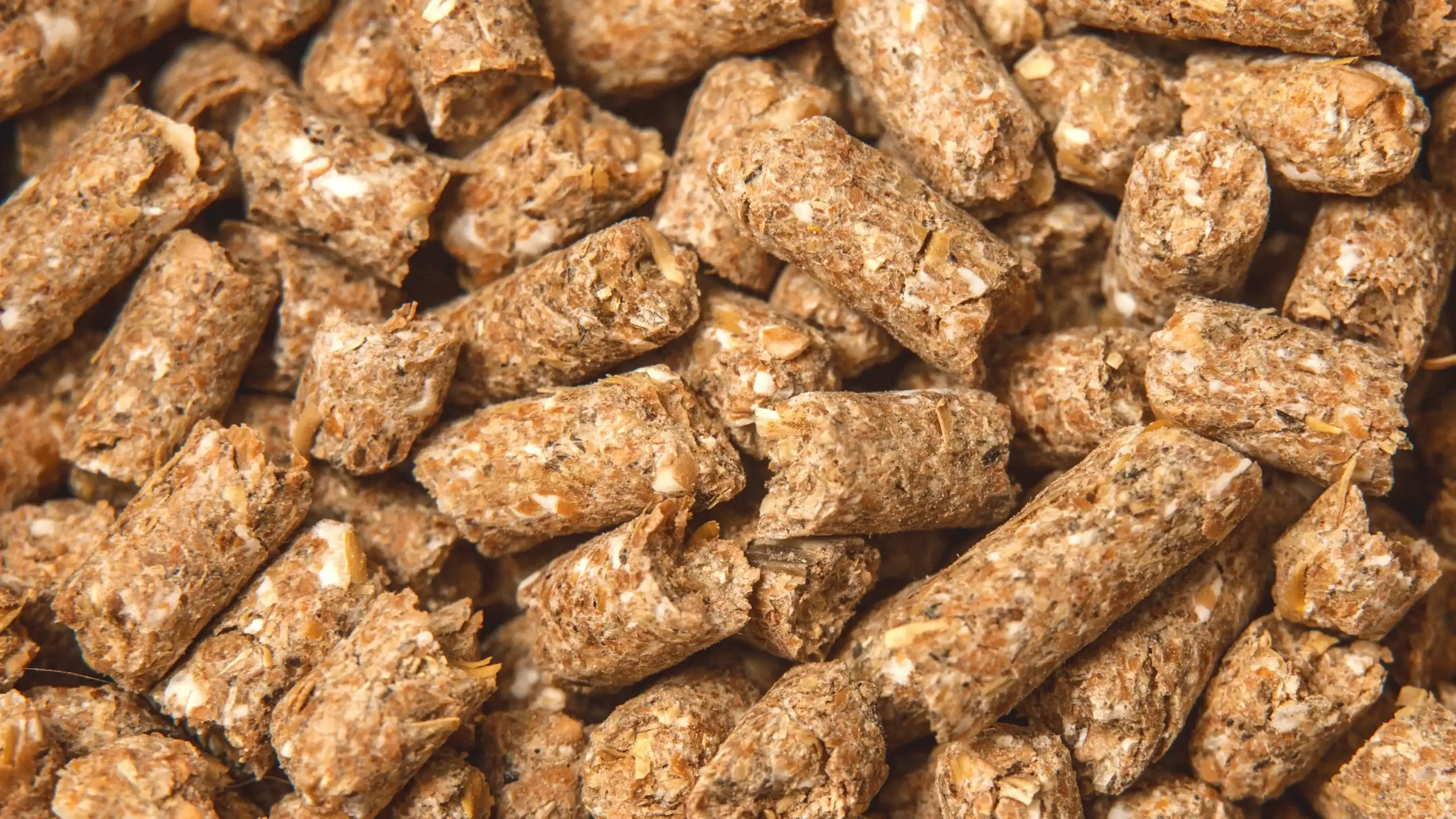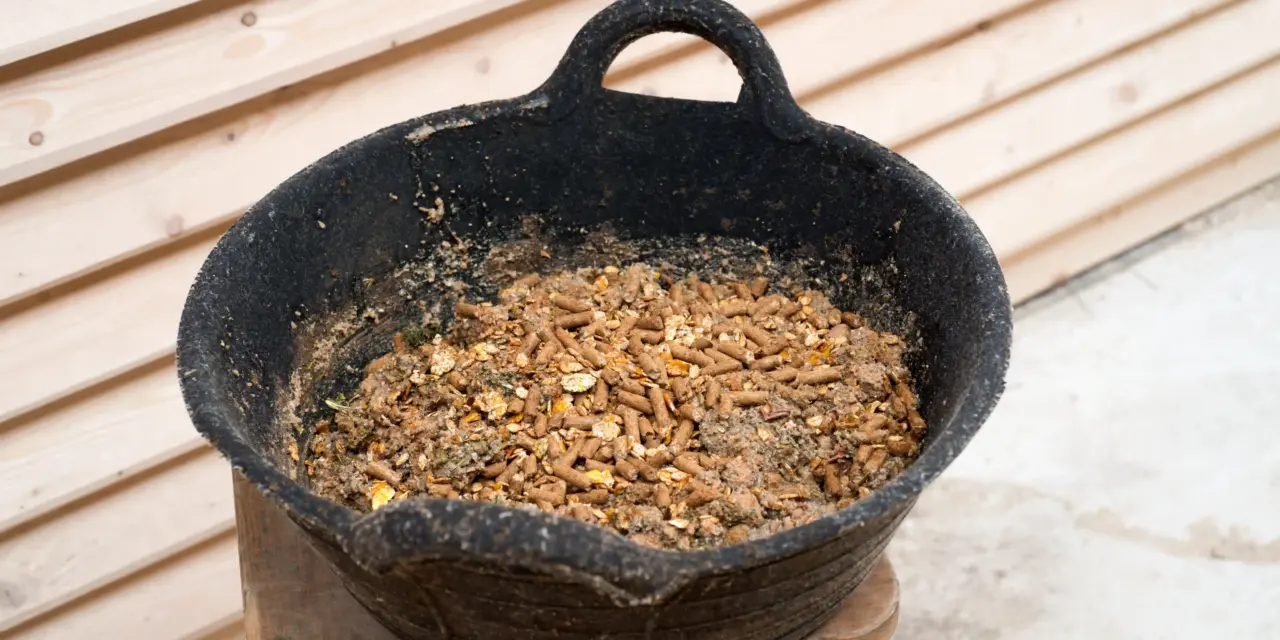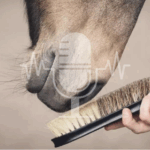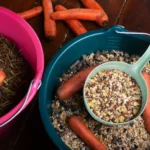The ultimate guide to understanding horse feed labels for informed owners
Key Points at a Glance
- Mandatory information is legally required: composition, and where applicable analytical constituents and additives, must be listed on every label.
- Order reveals quantity: ingredients are listed in descending order by weight – the first ingredient is the one present in the largest amount.
- Spot the hidden details: many important pieces of information are tucked away in the small print or between the lines.
- Distinguish marketing from facts: promotional claims often distract from the actual ingredients.
- Look for transparency in manufacturers: complete labelling shows commitment to quality.
- Label knowledge saves money: those who read labels correctly can spot overpriced marketing and identify genuine quality.
- Mandatory labelling alone is rarely sufficient: the best manufacturers go above and beyond.
The feed label is like the passport of horse feed – it reveals everything important about its content and quality. Yet many horse owners feel overwhelmed by the flood of technical terms, percentages, and E-numbers. In reality, though, reading labels is one of the most valuable skills for anyone who wants to feed their horse properly.
Why reading feed labels is vital for your horse’s wellbeing
Health starts with feed
The quality of horse feed plays a decisive role in a horse’s health, performance, and overall wellbeing. Poor-quality feed can lead to metabolic issues, colic, or long-term health problems. By understanding the language of feed labels, you can minimise these risks and provide your horse with the best possible nutrition.
Avoiding marketing traps
Colourful packaging and catchy slogans say nothing about the actual quality of the feed. Terms like “natural,” “premium,” or “traditional” are not regulated and can be used freely. The real truth lies in the small print – on the feed label.
Saving money through knowledge
Those who know how to read labels can quickly tell whether an expensive feed is really worth the price – or if a cheaper product offers the same quality. All too often, horse owners end up paying for fancy packaging and marketing while the actual ingredients are fairly average.
What every label must include
Mandatory information in overview
Every horse feed must carry certain information required by law. These minimum details are intended to help owners make informed decisions:
- Product name and feed type must be clearly stated. Terms like “complementary feed”, “feed material (straight)”, and “complete feed” have specific legal meanings and tell you whether the product can be fed on its own or must be used alongside other feeds.
- Composition lists all feed materials (ingredients) in descending order by weight. This is crucial for judging quality — the more specific the declaration, the better.
- Analytical constituents show the key nutrient levels – crude protein, crude fat, crude fibre, and crude ash. These values make it possible to compare different products.
- Additives cover all substances added to the feed, from vitamins and trace elements to preservatives. Each additive must be listed by its correct name, along with the registration number under which it is authorised in feed legislation.
Voluntary information as a mark of quality
High-quality manufacturers often go beyond the legal minimum requirements. Additional details such as precise nutritional values (e.g. sugar content), feeding recommendations, or information on the origin of ingredients demonstrate both quality and transparency. Some producers – for example, OKAPI – declare not only the mandatory information but also every single component used, including those not legally required under feed law. Such comprehensive labelling is a clear sign of reputable manufacturers with nothing to hide.
Where to find what’s on the label?
The anatomy of a feed label
Feed labels usually follow a similar structure, even if the design varies. The most important information is often spread across different sections:
- Front or header section usually shows the product name, brand, and the most eye-catching marketing claims. Sometimes you will also find basic information here, such as “complementary feed for horses,” although depending on the manufacturer’s approach, this may appear elsewhere on the label.
- Back, side panels, or lower section of the label this is where you will usually find the detailed mandatory information. Composition, analytical constituents, and additives are often printed here in smaller text – yet these are the most important sections for assessing quality. You will also see the recommended daily feeding amounts per animal, along with additional notes such as feeding instructions. Storage guidance provides insight into shelf life and product stability; especially sensitive ingredients require specific storage conditions, which should be clearly stated on the label.
- Lid or base often shows the batch number, best-before date, and sometimes additional manufacturer details. This information is essential for traceability and for ensuring the product’s freshness.
Some important details are tucked away in less obvious parts of the label. Feeding recommendations, for instance, often reveal more about nutrient density than the analysis figures alone. If a manufacturer suggests very large daily amounts (e.g. 2 kg per horse per day of a mix), this points to a low concentration of nutrients. In other words, you’re feeding a lot of empty calories – and paying a high price for them, since the bigger the bag, the more money you’re likely to spend.
Understanding the key terms
Decoding the legal jargon of feed labelling
Feed legislation uses specific terms that can be confusing for non-specialists but have very precise meanings:
- Complete feed in theory, this covers all of a horse’s nutritional needs and can be fed as the sole ration. In practice, however, horses always require forage in addition, which is why “complete feed” is more commonly found on dog or cat food tins than on horse feed labels.
- Feed material (straight feed) contains exactly one approved raw material as feed. For example, if you buy rose hips as a treat or pure MSM to support coat change, these are considered feed materials. Their purpose is to supplement the ration with very specific nutrients or ingredients.
- Complementary feed designed to supplement the normal ration. Most horse concentrates fall into this category, as do herbal blends or special mixes marketed for joints, muscle development, respiratory health, or digestion.
- Mineral feed intended to enrich the ration with concentrated minerals and, in some cases, vitamins. Only feeds with more than 40% crude ash may legally be labelled as “mineral feed.” Often the word “mineral feed” is printed in large letters on the front, but if the crude ash content is below 40%, the fine print will reveal it is actually declared as a “complementary feed.” In such cases, you are essentially paying for fillers rather than minerals – which goes against the very idea of a true mineral feed.
Interpreting ingredient names correctly
Feed law distinguishes between single feed materials (such as “oats” or “barley”) and collective terms (such as “cereals” or “cereal by-products”). Single feed materials are usually of higher quality because they state exactly what is included. Collective terms, on the other hand, can cover a wide range of ingredients – from valuable components to cheap fillers. On the label, ingredients are listed under “composition” in descending order of weight. So whatever comes first is present in the largest amount.
However, this is where things can get tricky. Some ingredients may be listed by fresh weight, others by dry weight, and certain feed materials are simply much heavier than others. The law only requires declaration by weight at the time of mixing, with no obligation to state the ingredients in the same condition. So, a small amount of a “heavy” ingredient (like oats or barley) can appear at the top of the list, while lighter but bulkier components (such as soy hulls) may end up at the bottom – even if they actually make up the bulk of the bag. Cheap fillers such as chopped straw, soy hulls, beet pulp, or apple pomace often fall into this category: they make the bag look full but contribute little real nutritional value.

Common confusions and misunderstandings
The percentage puzzle
Many horse owners assume that higher percentages automatically mean better quality. But that’s only partly true. A concentrate with 18% crude protein isn’t necessarily superior to one with 12% if the former is made mostly from low-grade protein by-products, while the latter provides high-quality protein from whole grains.
The naturalness myth
“Without artificial additives” may sound healthy, but it can be misleading. Horses need certain vitamins and trace elements that are often not present in sufficient amounts in natural feedstuffs like hay. Reputable manufacturers add these in a targeted way – and declare them transparently.
The E-number scare
All additives in feed legislation are assigned numbers so that their exact chemical form can be identified. These numbers may look intimidating, but they are usually far less worrying than their reputation suggests. For example, E300 is simply ascorbic acid – better known as vitamin C. What really matters is not the number itself, but the purpose and necessity of the additive.
Recognising quality signals
Positive signs of high-quality manufacturers
Transparent labelling is the most important quality marker. Companies that list their compositions in detail and in clear language usually have little to hide. Additional information on origin, processing, or nutrient levels also demonstrates professionalism and a genuine commitment to quality. Realistic feeding recommendations are another positive sign, as are useful additional details that aren’t buried under flowery marketing language. By contrast, if most of the label consists of glossy, easy-to-read advertising prose while the actual declarations appear in tiny print – and perhaps even hidden in a block of text across 20 languages – it’s worth asking yourself what the manufacturer might be trying to conceal.
Warning signs on labels
Terms like “cereal by-products” or “vegetable by-products” are perfectly legal but are often used to disguise low-grade fillers. Reputable manufacturers state their raw materials clearly and specifically.
Exaggerated marketing claims should always raise a red flag. If a feed claims to solve every problem and suit every type of horse, it’s most likely marketing spin rather than factual information. Likewise, if a company offers three different feeds supposedly tailored to three distinct horse types or health issues, yet all three contain the same ingredients, the promised effectiveness is highly questionable. Herbal blends advertised as “gluten-free,” hay cobs praised for their exceptionally low glycaemic index, or feeds promising perfect muscle tone are usually built on marketing hype rather than meaningful content.
Practical tips for buying feed
The label check
Before buying a new feed, it’s worth taking the time to carefully read the label or the declaration in the online shop. By law, the full label declaration must be available wherever the product is sold – but some suppliers hide it away in downloadable files buried deep in a submenu.
When checking a label, these questions can help:
What do I actually want to achieve with this feed?
Are the main ingredients clearly named, or hidden behind vague collective terms?
Are all the ingredients suitable for horses and appropriate for my horse’s specific needs?
Are all the necessary additives included in meaningful amounts?
Making fair comparisons
When comparing different feeds, it’s not enough to just look at the price per kilo – you also need to consider the recommended daily ration. A feed that looks expensive may actually work out cheaper if you need to feed much less of it. For example, many mueslis come with recommended amounts of 2–3 kg per horse per day to meet requirements. That means an 18kg sack will be gone in just 6–9 days, and you’ll need to buy another. By contrast, herbal mixes are usually fed at just 50–150 g per day. A seemingly pricey 5kg bag can therefore last one to three months!
Making informed choices
Reading feed labels isn’t rocket science – it’s a skill every horse owner can learn, and should. Once you understand how labels work, you can make well-founded decisions for your horse and won’t be dazzled by marketing claims. The effort is worth it: better feed leads to healthier horses, and thoughtful purchasing decisions save money in the long run.










